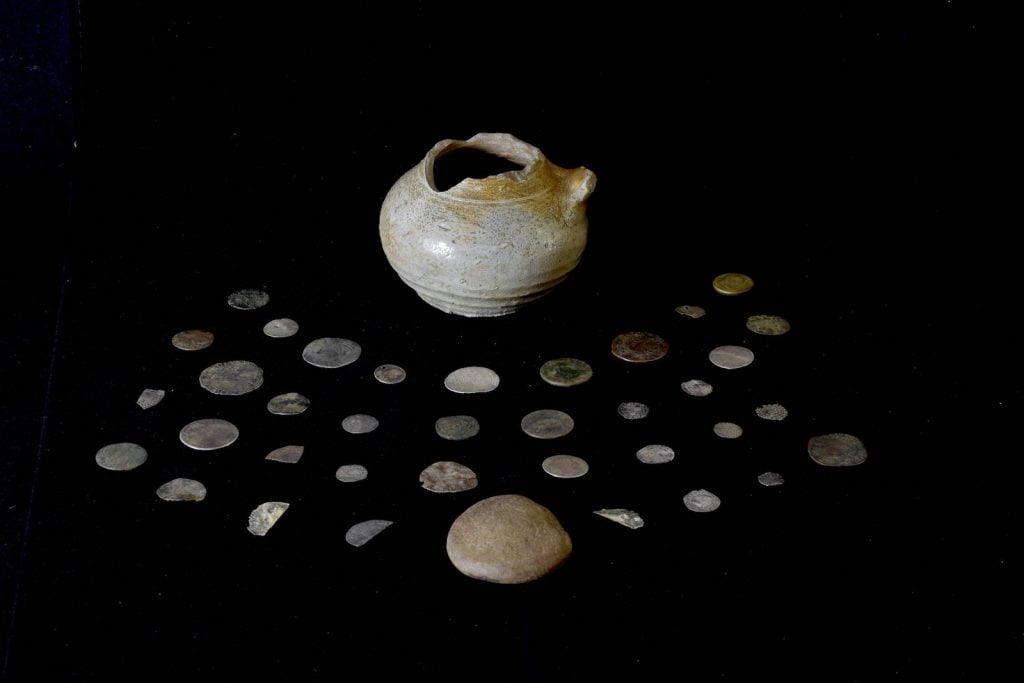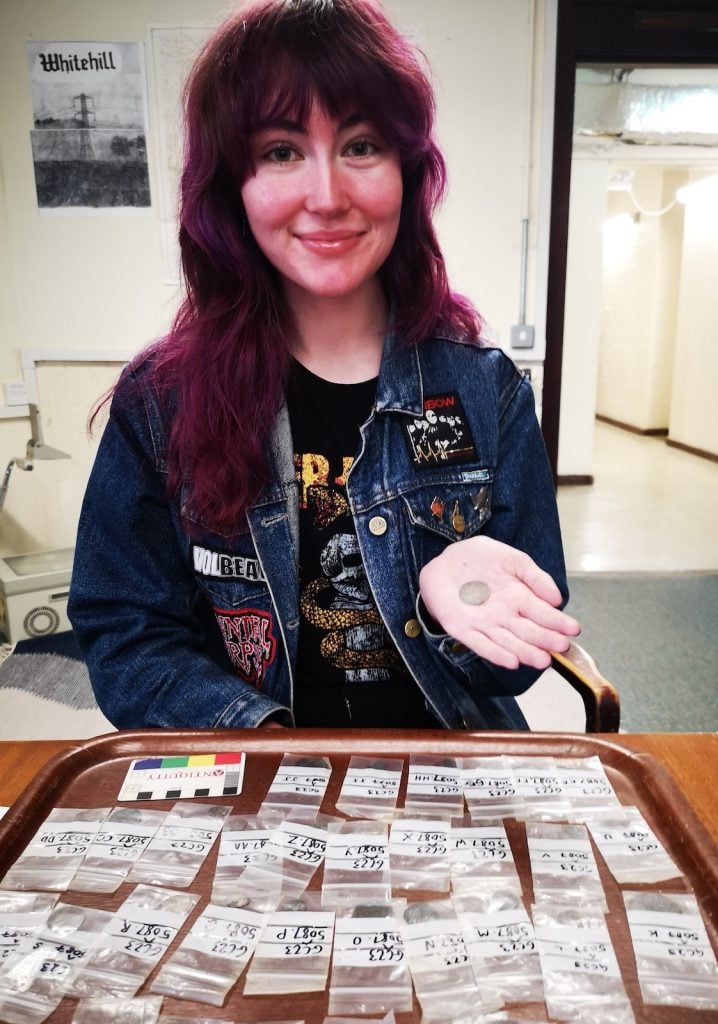Archaeology & History
An Archaeology Student Has Uncovered a Rare Cache of 17th-Century Coins Hidden Under a Fireplace
A dig by the University of Glasgow yielded a trove of coins and pottery under a fireplace at a rural estate.

A dig by the University of Glasgow yielded a trove of coins and pottery under a fireplace at a rural estate.

Max Berlinger

A University of Glasgow archaeology student on her first dig in August discovered a trove of ancient coins under a fireplace in Glen Coe, Scotland. Believed to have once belonged to a highland chief, the 36 coins, dating back to the late 1600s, were found at what was believed to have been a hunting lodge or feasting hall.
“As a first experience of a dig, Glencoe was amazing,” said Lucy Ankers, the student who came upon the ancient coins. “I wasn’t expecting such an exciting find as one of my firsts. I don’t think I will ever beat the feeling of seeing the coins peeking out of the dirt in the pot.”
As first reported by the Guardian, the collection includes international currency from the reigns of some of history’s most iconic monarchs, including Elizabeth I, James VI, and Charles II. Other discoveries included pottery from England, Germany, and the Netherlands as well as musket and fowling shot, a gun flint, and powder measure.

Lucy Ankers, the student who discovered the ancient coins, examines the find at a lab at the University of Glasgow. Photo: Gareth Beale.
The coins are believed to have been the property of clan chief Alasdair Ruadh “Maclain” MacDonald, who was the victim of a massacre of those who had attempted to restore the Catholic James II of England and Ireland and VII of Scotland after his deposition by his Anglican daughter Mary and her husband, William of Orange.
“These exciting finds give us a rare glimpse of a single, dramatic event,” the co-director of the University of Glasgow’s archaeological project in Glencoe, Michael Given, told the paper. “Here’s what seems an ordinary rural house, but it has a grand fireplace, impressive floor slabs, and exotic pottery imported from the Netherlands and Germany.”
“What’s really exciting is that these coins are no later than the 1680s,” he continued. “So were they buried in a rush as the massacre started first thing in the morning of 13 February 1692? We know some of the survivors ran through the blizzard and escaped up the side glens, including this one. Were these coins witnesses to this dramatic story? It’s a real privilege to hold in our hands these objects that were so much part of people’s lives.”
More Trending Stories: